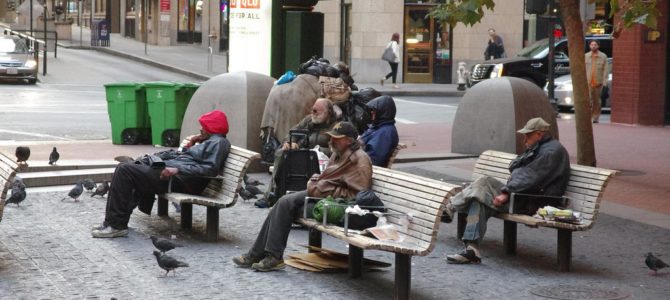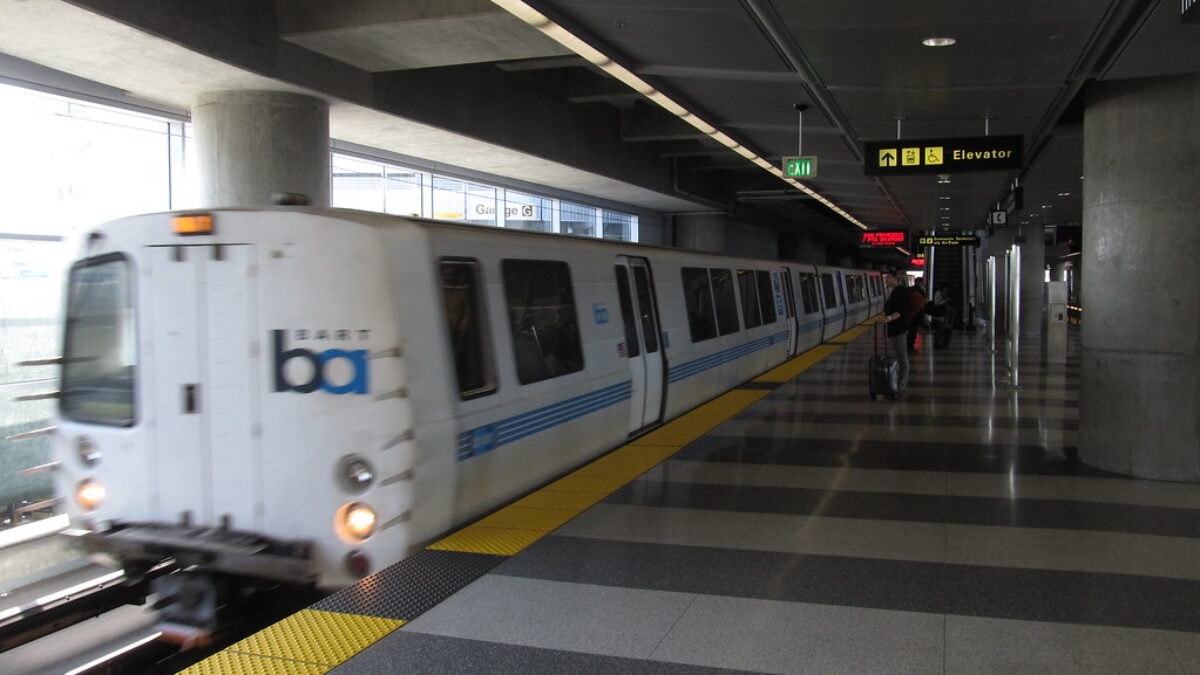
One of the most annoying — and notorious — aspects of life in San Francisco is locals’ tendency to micromanage nearly all of everyday life, from shopping bags to perfumes to any attempt to use a carbon-fueled vehicle. When SF residents find someone in violation of their rules, whether or not formally codified, they call him on it in all their self-righteous glory.
Brock Keeling, the editor of a popular local site sf.curbed, is a “self-described and proud ‘militant pedestrian.’” He penned “Pedestrian Etiquette Guide: How To Use The Sidewalk Like A Good Person.” Those who activate his pet peeves are inherently bad, I guess. No treats for us.
According to Keeling, the need for sidewalk etiquette is enormous. There have been a lot of traffic fatalities, and, get this: “Ride-hailing companies have turned streets into cash cows. And said companies use San Francisco streets as testing grounds for driverless cars.”
God forbid Uber makes any profit. Of course, none of it proves that San Francisco pedestrians are incapable of using a sidewalk, but, nonetheless, Keeling came up with a total of 17 (seventeen!) rules, and posted them under the “Beginner’s Guide To San Francisco” category. Because in San Francisco, existing should be a chore.
Among the rules: “Using the timed crosswalk. Three seconds left on the clock is not enough time to cross major streets without leaving you in the path of an automobile.” A useful bit of information, thank you. How would I ever know?
Here’s another: “Be willing to move your umbrella. Umbrellas are space hogs. Get ready to move them up, down, sideways, or in the process of folding it up, in order to be at harmony with your fellow pedestrians. Once folded, aim your umbrella at the ground.”
Perhaps in places like Rome or Tel Aviv, where the locals have a habit of talking with their hands, those umbrellas might be pointing every which way. In San Francisco, not so much. Umbrellas have handles designed for the device to be pointed down, and that’s the way they tend to be held. Things like that just tend to work out.
“Parents with kids in strollers do want your help at difficult curbs, with the door to stores and restaurants, etc.,” says Curbed Boston editor Tom Acitelli. “I used to think otherwise, until I was put in the position. Pitch in!” There is nothing like a moral imperative to etiquette rules: help the parents! Help the babies! Make yourself useful, get self-righteous.
Another rule: “Look behind you from time to time. Make sure you’re not blocking the path of someone moving at a faster pace.” After reading this column, I will be looking behind me to check if Brock Keeling is following, judging my umbrella-folding skills and ability to keep pace.
As a good San Franciscan, Keeling is obsessing with minutia when a major issue, right there in front of him, is somehow completely unacknowledged. I mean, we all know what the problem with San Francisco sidewalks is, right?
It’s not that the foodies may line up the wrong way at the door of their favorite venues. I can ask people to move if and when that happens. What’s physically blocking pedestrian walkways in the City on Seven Hills are the homeless encampments.
Sometimes street people make their sidewalk apartments out of junk they find in dumpsters — maybe a disheveled rag, perhaps a chair. But many have tents, and those can take up entire width of pedestrian pathway. Bodies, presumably alive, lying stretched from the wall to the gutter are not unusual to see.
All of these behaviors are quite ableist of the unhoused. I can step over a passed-out junkie, or veer into the street when there is no traffic, but a disabled person in a wheelchair can’t. Parents with strollers have to navigate around the same barriers.
Certain streets, especially in the South of Market neighborhood where Keeling lives, according to his bio, are teeming with encampments, and many housed individuals are too intimidated to go there, and for a good reason. In recent months, local street druggies have been switching from heroin to methamphetamines, which is not pretty. Against the background of spiking violent and property crimes, homeless encampments look menacing.
Then there is the trash, and, of course, ubiquitous needles and human waste. San Francisco poop maps are substantive click bait, of course, so from time to time serious publications publish updated versions. Here is the latest one from Forbes, explaining where in the city the 132,562 sighting of human fecal matter in 2018 were reported.
Then there are the syringes. San Francisco had stopped any pretense at running a needle exchange program because no needles are actually exchanged. City Hall gives them away, after which some are collected through various programs. Out of astonishing 400,000 syringes distributed each month, only 154,000 return.
Matt Haney, the supervisor of San Francisco’s District 6, the one most affected by the drug and homelessness problems, has just proposed “A 10 Point Action Plan for Clean and Healthy Downtown San Francisco.” I feel for Haney. I think he knows what needs to be done: arrest drug dealers, force users into rehab, and put the mentally ill into long-term care.
He is, however, just a supervisor, and those issues are outside of his control. So he calls for syringe disposal boxes, more public toilets, and more frequent deep pressure washing. Oh, and, for some reason, funky public art. Haney claims that multicolored dots on sidewalk will keep people from pooping on it. That’s the language he used, by the way, which is a bit amusing coming from an elected official.
He cites no evidence for his assertion, of course. I highly doubt that individuals strung out on opiates very much care about where they drop their syringes or relive themselves. And this, not the situational comedy with umbrellas, remains the chief problem with San Francisco sidewalks.









